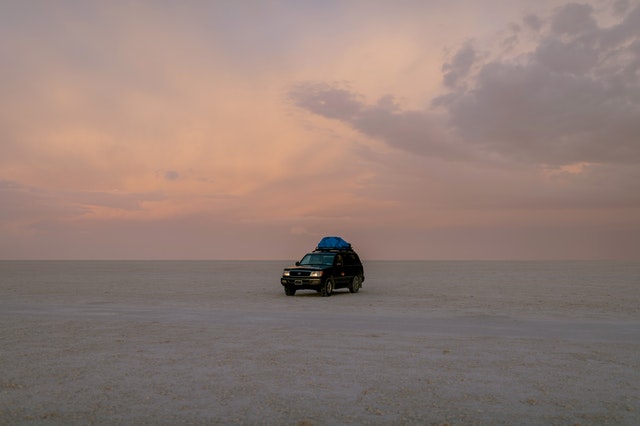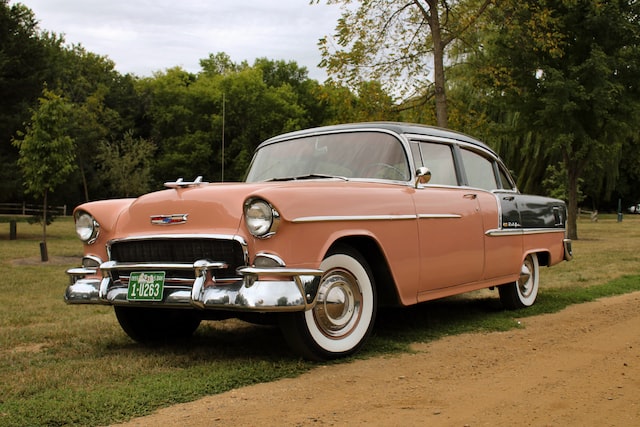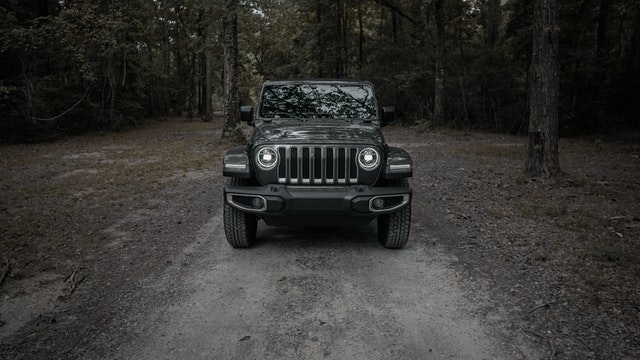The road surface that is frozen or has a layer of snow causes quite a lot of difficulties in moving. Many traffic accidents have occurred because the vehicles lost control when moving through the slippery road area. Although all drivers have to go through the process of learning and taking a driving test before officially driving, driving on ice is still a big challenge for many drivers, especially new drivers. The below article will provide you with effective ice driving tips so that you can firmly steer in this type of terrain.
Effective Ice Driving Tips
- Check the car carefully before moving
When driving under snowy or icy conditions, you need to check every part of the vehicle to make sure the vehicle is in good working order. The parts of the car that you should focus on checking include:
- Tires: Not all tires are suitable for traveling on snow and ice. When driving in the winter you should replace it with a set of winter tires, horizontal panels, thick tires, deep grooves … but still have to be the right size for your car.
- Battery: Make sure your battery is always fully charged, and healthy so that the car’s electrical system, especially the car’s light system works well continuously for many days with continuous high capacity.
- Engine: It is recommended to use a manual car that is suitable for transmission areas and complex terrain. At that time, the manual engine will start better, going to a small gear will help you prevent slipping on snow and ice. The engine is carefully checked and maintained before the trip, the strong engine helps you feel more secure in each journey.
- Windshield Cleaner: Frozen windshield washer fluid is a common problem experienced by many inexperienced drivers. The reason is that you did not pay attention to adding the correct solution. Too much water causes them to freeze and also cannot be cleaned. Please pay special attention, because we cannot constantly get out of the car just to wipe the snow.
- Fuel: You should fill up with fuel before you go because driving in icy conditions, the engine and the air conditioner must work harder to keep the components from freezing and freezing.
- Glass doors: Please clean through the surface of the car, steering wheel, door glass, and rear glass. If your car is left overnight in freezing weather and you wake up in the morning you no longer recognize your car, gently scrape the snow. Do not use water to clean, you may contribute to the increase of frost on the glass.
- Lights: At the low temperature and night areas, there will be a lot of thick fog. At this time, the car lights will be very important, turn on the lights in fog mode and keep a distance from the cars.

- Understand your route
When taking a trip during the winter, one thing you should do is exactly know your route. Understanding your route ahead of time will help the driver be more active and not be surprised when encountering difficult roads. During the process of moving on a strange road, the driver should control the vehicle slowly to observe and promptly handle when encountering bad situations. Try to follow the track of the front wheel to increase traction, but do not run too close to the vehicle in front.
In the event that it is imperative to move on an icy road, the driver needs to have good preparations in terms of tires, brakes, and lighting systems. If you do not have too much experience of traveling on slippery, icy roads or do not have much information about the road to prepare to move in hills and mountains with steep slopes, the driver should not be too risky. If possible, the driver should find a safe parking space, do not continue to move until the road surface has become safer.
- Ensure good visibility
The driver’s visibility is often limited when it rains, so the front windshield and rearview mirror are the parts that need to be cleaned. For the windshield, not only the outside but also the inside must be clean, free of condensation. So, check and replace your wipers regularly to ensure visibility when it rains.
Remember to overcome the “blind” spot on the mirror. Mirrors also have “blind” spots, that is, there are positions where the driver cannot see the cars behind or next to them through the mirror. Therefore, in unsafe situations, the driver needs to turn his head to observe directly with his eyes to identify vehicles in the area out of sight. Note, only turn your head quickly over your shoulder, not your whole body or shoulder, because if you turn your body or shoulder, the steering wheel will also turn and the car will change direction, easily losing balance and causing danger.
- Drive slowly and keep your distance from other vehicles
Moving at high speed on slippery, icy road surfaces, there is a potential risk of accidents due to the driver’s failure to handle when encountering obstacles, or the vehicle losing control. Drivers need to have a habit of observing the speedometer to understand the speed of the vehicle and adjust the speed accordingly. Always listen to the sounds of traffic on the road and capture what’s going on outside the vehicle. Moving the vehicle at a slow speed and keeping a safe distance from the vehicle in front give the driver time to handle unexpected situations.
A slippery road surface will significantly increase the braking distance because the grip between the tire and the road surface is greatly reduced. Increasing the distance from the vehicle in front will give the driver more time to handle the situation, and at the same time limit the situation of crashing into the rear of the vehicle in front due to the increased braking distance. The safe distance from the car in front is calculated by 2 bodies so that in the event of an accident, the driver has time to handle the situation and keep the safety of the person and the vehicle. Absolutely avoid following behind other cars.
- Calmly handle when the car slips
Driving on a slippery road will inevitably slip due to the loss of friction with the road surface when changing direction. Vehicle skidding has two types: understeer or oversteer. Understeer is common in front-wheel drive vehicles, and overdrive is common in rear-wheel drive vehicles. For understeer, the driver needs to slow down to quickly fix the problem. Meanwhile, handling overdrive requires the driver to rotate the steering wheel against the front of the vehicle to regain control.
- Accelerate, brake, and steer slowly
The slippery road surface causes the friction force with the tires to be significantly reduced. If the driver accelerates suddenly, the tire will lose grip and just rotate in place. Unlike driving on a dry surface, braking quickly on a slippery road will increase the braking distance, even causing the vehicle to roll sideways.
In short, the driver when performing movements such as pressing the gas, stepping on the brake, or changing direction on a slippery road surface need to do it slowly. This will help keep the friction between the tire and the road as high as possible.
- Use different types of lights
Weather with ice/snow or associated with blindness also often causes poor visibility. At this time, the white light will make it difficult to see the surrounding road. When traveling in unfavorable weather conditions, it is advisable to turn on all lights (lighting, fog) equipped on the vehicle. You need to prepare in advance a pair of low beam lights using yellow bulbs (less blocked in air and moisture). The driver can also leave the hazard warning light (triangle light on the dashboard) in a continuous flashing state, to signal to other vehicles in traffic.
- Understand the car you drive
Vehicles equipped with 4-wheel drive (AWD and 4WD) will be great vehicles when traveling on ice/snow. This drive system will be an effective assistant to help the car maintain traction and overcome snowfields, but it won’t help if the road surface is too slippery and the vehicle is skidding hard.
To be able to master all situations, the driver needs to understand the features that his car is equipped to use in different situations. For example, electronic body stabilization system (ESP, VSC…), traction control system (TCS), anti-slip control system (ASR); Anti-lock braking system (ABS); traction control (ESC)… are useful features when traveling on slippery roads.
- Follow the tire tracks of the car ahead
When driving in snow you should follow a vehicle ahead as well as the tire track of that vehicle, because the trail of the vehicle in front has cleared the way for your vehicle, reducing the consistency between rainwater and dirt on the road surface, preventing slipping. In addition, it is recommended to turn on the low beams or fog lights (even in light rain) to illuminate the road better and make it easier for other cars to see your car.
- Hold on to the steering wheel
When you lose control, the natural reaction of many people is to keep steering, but that is a mistake because it brings no results, sometimes making the situation worse. On slippery roads, the car is easy to deviate from the lane, in this situation, the driver should hold the steering wheel firmly in the direction of the slide and slowly release the brake until regaining control of the vehicle.
- Do not use cruise control
When driving the vehicle through an icy road or a slippery road, the driver should not activate the Cruise Control system. Because according to experts, when Cruise Control, the driver’s accelerator pedal is released, which can make the driver’s response slower than usual. You should only use Cruise Control when the road is dry because this mode will keep the speed of the wheel regardless of the weather. You need to take full control of bad road conditions to be able to make quick decisions.
- Bring an emergency storage kit
Emergency storage kit includes: flashlight, first aid bag, flares, windshield cleaning liquid, blanket, sleeping bag, gloves, tissues, drinking water, food, salt, etc. for use while waiting to be rescued. They will help you a lot during long trips and bad weather in winter.
- Beware of ice and black ice
The ice makes the tires lose their grip on the road, making it difficult to navigate and decelerate. Ice is formed when the road is wet and the pavement is subjected to cold air that lowers the temperature to the point that the water freezes. Because soil conducts heat less than air, ice often persists even when the surrounding air is no longer cold.
If you see the road ahead as slick as water, be careful because it’s “black ice”. Black ice is also formed like ice but is a very thin layer and the color is still as black as the road surface so it is assumed to be a normal road surface, which makes black ice extremely dangerous for drivers. Vehicles often mistakenly think it is a harmless puddle. Black ice usually forms at night and dims in the morning.
- Run the air conditioner
Running the air conditioner in cold weather sounds paradoxical. But this is an effective measure to prevent mist from gathering inside the windshield.
When the temperature outside the car is colder than inside the car, the air outside is less humid than inside (due to the breath of the driver and passengers), moisture will condense on the cold glass. Please turn on the air conditioner in fresh air mode to reduce the humidity in the car, turn on the glass heating button, adjust the temperature to the right temperature to raise the windshield temperature. In this way, dew will not accumulate inside the windshield and affect visibility. In many cars, when the glass heating mode is turned on, the air conditioner automatically adjusts to the appropriate temperature.
- Troubleshooting Cars Stuck In The Snow
If you are stuck in the snow, the main advice is to keep the accelerator gently and do not press the accelerator too hard. Turn the wheel so that the wheel turns from one side to the other continuously until the wheel pushes the snow to the sides and then slowly crawls out of the mud. Just like getting stuck in a swamp or sand, don’t try to let the car through, because the car will sink even deeper.
Equip a snowplow, a small shovel to clear the snow, if the car is still unable to go, then shovel some gravel in front of the nose and behind the tire to create friction and traction, helping the car start. Better to get out of the icy puddles. Continuously moving forward and backward, if there is someone to support you while pushing, it is best, let the car move, steer to the sides to turn the snow.
If you get stuck in your car, make sure you close the doors and seal all the openings if possible to block cold air from getting into the car. You can also keep yourself moist by leaving the engine on and turning on the air conditioner, but make sure the exhaust has an outlet and is not blocked by ice. Otherwise, you will be suffocated by very toxic Carbon Monoxide gas, so you absolutely must not let the engine run, in this case, the smoke will go back into the car.
When you have to stop in the middle of the road like that and there is still a car in front of you, the snow continues to fall but you can’t get out, make a sign for other cars to know that you are there. there and in the car. Our experience has been to use a recognizable piece of brightly colored fabric to hang on the front and back of the vehicle or fasten the side of the vehicle.
We hope that our tips on ice driving can provide you with beneficial knowledge and still for safe driving in snow.
Let’s try our free DMV practice test to easily pass your exam, or download it for your IOS or Android devices now!
Good luck and hope you can have a better journey!

UT Utah License Renewal: A 2025 Comprehensive Guide
Discover the ultimate guide to Utah license renewal! This comprehensive guide delves into the intricacies of renewing your driver's license in Utah,...
February 13, 2023

South Carolina S.C. Driver's License Renewal
The South Carolina S.C. driver's license renewal process is designed to be comprehensive, taking into consideration eligibility requirements, renewal methods,...
February 13, 2023

Pennsylvania PA DMV License Renewal: A 2025 Full Guide
The Pennsylvania PA DMV license renewal process is designed to be comprehensive, taking into consideration eligibility requirements, renewal methods,...
February 10, 2023

